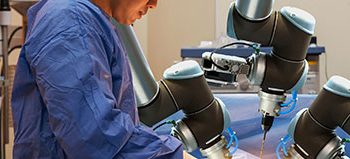Cell lysis is the process of breaking down the cell membrane of a cell, which can be done either artificially or naturally. It is a process used to extract cellular materials such as DNA, proteins, carbohydrates, and lipids. Cell lysis can be used to study the components of a cell, or to destroy a cell to prevent further growth or spread of infection.
- Isolation of Proteins and DNA: Cell lysis is used to isolate proteins and DNA from cells for further analysis. It can be used to separate proteins from other cellular components and to extract DNA for use in genetic engineering and cloning.
- Diagnostic Testing: Cell lysis is often used in diagnostic testing to detect the presence of specific proteins or DNA associated with a particular disease or medical condition.
- Biochemical Research: Cell lysis is used in biochemical research to study the chemical and physical properties of cellular components. This can be used to gain insight into the structure and function of proteins and other biomolecules.
- Forensic Analysis: Cell lysis can be used to identify individuals from biological samples such as blood, saliva, or skin. It can also be used to analyze evidence from crime scenes.
Recent trends in the cell lysis industry include:
- Automation and Robotic Solutions: Automated and robotic solutions have been increasing in popularity in the cell lysis industry, as they provide a highly efficient and cost-effective way to quickly process large volumes of cells.
- Increased Focus on Miniaturization: Miniaturization is becoming increasingly important in the cell lysis industry, as it allows for smaller samples to be processed more quickly, while also reducing costs.
- Increased Use of Non-Destructive Techniques: Non-destructive methods of cell lysis, such as sonication and microfluidic lysis, are becoming increasingly popular, as they provide a more gentle and efficient way to extract cell contents without damaging the cells.
- Improved Analytical Techniques: New analytical techniques such as flow cytometry and mass spectrometry are being developed, which allow for a more detailed and accurate analysis of cell lysates.
- Improved Sample Preparation: Sample preparation is becoming increasingly important in the cell lysis industry, as it allows for greater control over the cell lysis process and improved accuracy in the analysis of cell lysates.
Benefits of Cell Lysis
- Increased Access to Intracellular Components: Cell lysis allows for the extraction of intracellular components, such as proteins and DNA, for further research and analysis.
- Improved Protein Purification: Cell lysis can be used to purify proteins by breaking down the cell membrane and releasing the desired protein from the cell. This process can also be used to remove undesired components such as nucleic acids.
- Improved Production of Biopharmaceuticals: Cell lysis can be used to break down cells and release the desired biopharmaceuticals, such as antibodies and enzymes, for further use.
- Reduced Cost of Production: Cell lysis can be used to reduce the cost of production by breaking down cells and releasing the desired biomaterials without the need for costly purification steps.
- Improved Efficiency: Cell lysis can be used to extract the desired materials from cells quickly and efficiently. This can help reduce the time and cost required for downstream processing.
Cell Lysis Market Future Analysis
The global cell lysis market is expected to grow at a 7.2% from 2021 to 2026 and is poised to reach $4.1 billion. Owing to factors such as the increasing demand for biopharmaceutical products, growing research activities in the field of biotechnology and life sciences, and advancements in cell lysis technologies. Furthermore, the emergence of innovative cell lysis methods, such as magnetic bead-based cell lysis and laser-induced cell lysis, is projected to drive the market in the foreseeable future.
The growing number of collaborations and partnerships among major industry players is anticipated to further bolster the demand for cell lysis products. The increasing emphasis on integrating automation in cell lysis processes is another factor expected to propel the market. Additionally, the increasing prevalence of chronic diseases is expected to create numerous opportunities for development of new therapeutic products, which could further drive the market in the coming years.
However, the high cost of cell lysis products is likely to hamper the growth of the market. Additionally, the lack of skilled professionals to operate cell lysis instruments is anticipated to challenge the market growth.
Related News


